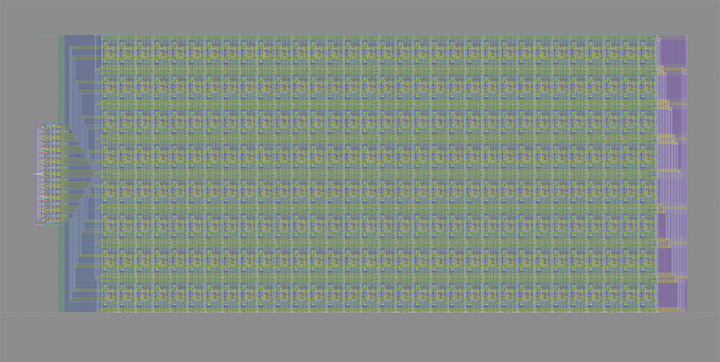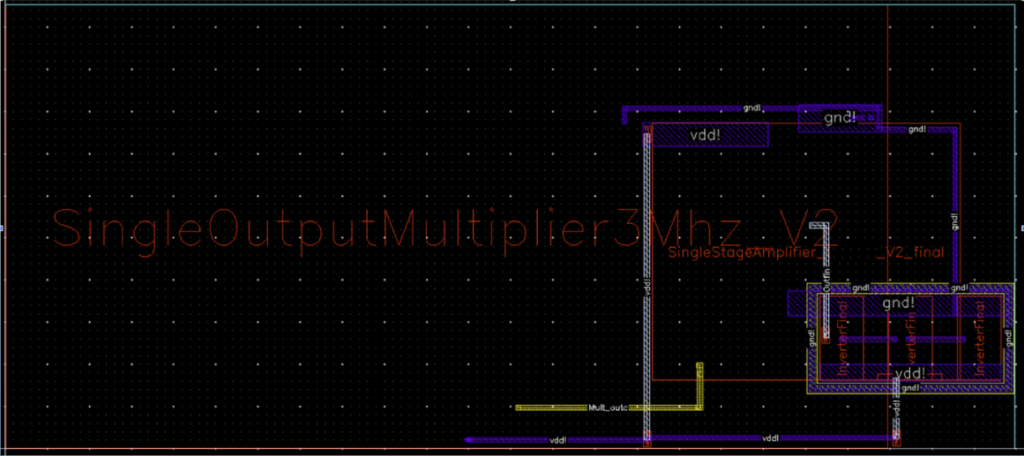Project Category: Electrical
Join our presentation
About our project
Image sensors are part of our everyday life, being the component of a camera that forms the image itself. How does this actually work though? Well, image sensors develop their images by capturing the light shining on the individual photodiodes that are in an array in the sensor and reading out the light level on each photodiode one at a time or one row of photodiodes at a time. Even though the read-out time is still in microseconds, this can definitely be improved with some innovation.
The aim of this project is to reduce the readout time of an image sensor by reading out more than one row of pixels at a time. To do this, our team decided to use communication theory to obtain a parallel row read-out. Because each pixel still needs to pass its light signal to the image sensor output, this design utilized filters and decoders to recover the original light signals from each pixel. This project was done on Cadence Virtuoso, where all the required component schematics and layouts were designed and tested using Cadences simulation software.

Details about our design
HOW OUR DESIGN ADDRESSES PRACTICAL ISSUES
Our design addresses the issue of pixel readout in an image sensor by focusing the design around parallel pixel readout. This completed design can make for a more efficient image sensor that can be continued by a member of the I2sense Laboratory to further utilize.
WHAT MAKES OUR DESIGN INNOVATIVE
This specific image sensor design incorporates communication theory to make parallel readout possible. Because of the uniqueness of communication theory being part of an image sensor design, our project is the proof of concept that this type of design is possible.
Our image sensor also has a unique set of components such as an encoding block to encode the light signals when the multiple pixels are sent out at the same time, a filter block that recovers the encoded signals from the column bus, and a decoding block that recovers the original light signal taken from the pixels.
WHAT MAKES OUR DESIGN SOLUTION EFFECTIVE
It allows for parallel row readout, specifically for 4 rows being sent to the column bus at the same time. Because of this, the readout time for this image sensor will be faster than your conventional image sensor.
It is also able to save component space by having the communication encoding block directly inside the pixel cell such that the pixel array can directly encode the light signals for parallel readout.
HOW WE VALIDATED OUR DESIGN SOLUTION
Using Cadence Virtuoso, we were able to run testbench simulations and layout checks for all of our designs. We were able to test many components together and attain mostly reasonable results. Our layouts were able to pass all the necessary checks and provide final post layout simulation to validate the concept of a communication theory based image sensor.
FEASIBILITY OF OUR DESIGN SOLUTION
As a group, we documented all the choices made for our component designs and testing along with any limitations. That way, any member of the i2sense laboratory can continue or utilize this project and design in the future.
Partners and mentors
We want to thank the many people who helped us with this project. Our sponsor Devin Atkin provided valuable support throughout the entire project, guiding us through difficult situations and helping us overcome issues. We would also like to thank Dr. Yadid-Pecht for the strong advice she gave through the project and providing our team with the Cadence software license to develop our designs. Our TA, Zahra Kabirkhoo, also deserves a mention for helping guide the project management at different times.















